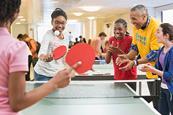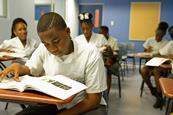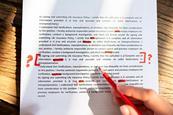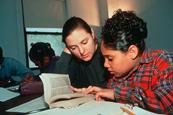Close menu
- Home
-
Children
- Back to parent navigation item
- Children
- CLIL
- Grammar
- Sustainable Development and Global Citizenship
- Support for Teaching Children
- Vocabulary & Phonics
- Warmers & Fillers
- Topics & Themes
- Teenagers
-
Adults
- Back to parent navigation item
- Adults
- Business and ESP
- ESOL
- Exams
- General English
- Grammar
- Skills
- Support for Teaching Adults
- Sustainable Development and Global Citizenship
- Vocabulary
- Professional Development
- Online Teaching
Using the news: brainstorming
Some brainstorming activities to use in your class.
Mixed-ability teens: Allowing students to work at their own level
Understanding that students need to work at their own level.
Teenagers: Limited resources: Moving around
Children all love to get up and move around. It gives them a chance to use up spare energy, to refresh themselves if they have got tired or bored and to get actively involved in their learning.
What is CLIL?
CLIL stands for Content and Language Integrated Learning and refers to teaching subjects such as science, history and geography to students through a foreign language. Learn more here.
Your CLIL
Keith Kelly provides a comprehensive lesson plan focusing on both content and language, accompanied by a useful word list highlighting language used in core function areas of different subjects. These lesson plans and word lists are the result of analysis into the language of the content subjects: geography, biology, chemistry ...
CLIL teaching tips
Practical advice and ideas from Keith Kelly on using video in class, and from Carol Read on integrating CLIL into the Primary Classroom. This section also features a CLIL factsheet and some useful tips and suggestions for helping students learn and practise vocabulary.
Teenagers: Games
A guide to using games in the classroom with lots of games and activities. Many of these games can be used by all ages.
Teenagers: game 3: A - Z race
Games to play with teenagers in the English classroom.
Teenagers: game 8: making sentences
Games to play with teenagers in the English classroom.
Assessment matters: What is assessment?
Adrian Tennant takes a look at what is meant by assessment in this introductory article in the Assessment matters series.
Assessment matters: Designing your own tests
Adrian Tennant explores some of the issues behind designing your own tests and gives some practical examples of how to go about it.
Teenagers: Preparing young learners for exams
Many children around the world, especially teenagers, have to take formal English language examinations. This section provides some useful suggestions for teenagers taking exams.
Teenagers: Songs: Songs and grammar
Ideas for using songs to teach grammar.
Teenagers: Grammar: Grammar practice
Some useful ideas to get your students to practise their grammar.
Teenagers: Grammar: Drilling grammar
Drilling activities for teaching grammar.
Teenagers: Speaking: How to encourage teenagers to use English
Teenagers often do not feel comfortable using English in the English classroom because they feel self-conscious doing so. One way to help them deal with this is to introduce different ‘masks’ for them to hide behind.
Teenagers: Speaking: Why teenagers avoid using English
Reasons why teenagers may be reluctant to speak English in class and solutions to help students overcome this problem.
Teenagers: Reading 1: Reading in class
Students who are faced with a text in class and asked to read it and answer questions often find the task difficult.
Teenagers: Preparing teenagers for the exam: Reading
This section contains useful suggestions for preparing teenagers for reading components in the exam.
Listening skills: Top Tips
By Miles Craven
Miles Craven offers some useful techniques to use when teaching listening.
Listening matters: Top-down and bottom-up listening
Adrian Tennant explores two concepts relating to how students process listening texts – 'top down' and 'bottom up' – and gives some practical ideas for the classroom.
Teenagers: Writing: Real writing
Some activities that foster real written communication.
Teenagers: Writing: Correction
A composition returned to a student covered in red ink is very demotivating so here are some ways to make correction more positive.
Teenagers: Vocabulary
Olha Madylus looks at strategies for teaching and learning vocabulary.
Teenagers: Vocabulary: Activity: Categorizing language
An activity designed to help students recognize language categories.
Join onestopenglish today
With more than 700,000 registered users in over 100 countries around the world, Onestopenglish is the number one resource site for English language teachers, providing access to thousands of resources, including lesson plans, worksheets, audio, video and flashcards.
Follow us and connect...
©Macmillan Education Limited 2023. Company number: 1755588 VAT number: 199440621
Site powered by Webvision Cloud
























